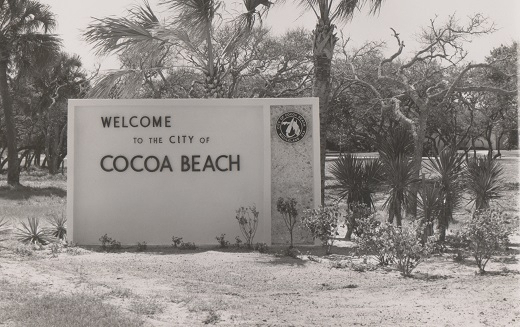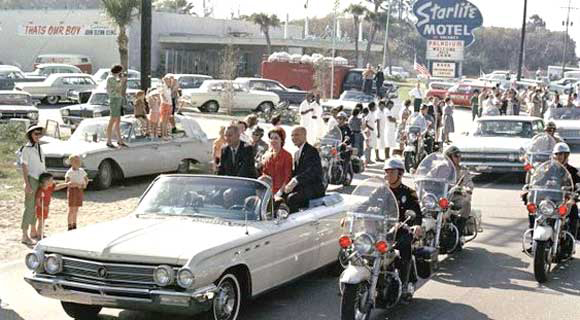

June 5, 2025 marked the centennial anniversary of the founding of the Town/City of Cocoa Beach. The City is planning its celebration through a series of events held from July 5 to July 13.
The planned celebration is quite different than the traditional one the City of Titusville held in 1967 to commemorate their centennial. Secretly, I had hoped the city would have looked more to its Missileland, USA heritage. It boasts a rich and unique past that no other community can claim. Yes, Titusville, Cocoa, and other cities in Brevard expanded with the arrival of missile activities at Cape Canaveral and Kennedy Space Center. However, each was already well-established and simply expanded and later contracted in response to these missile and space activities.
In 1950, Cocoa Beach was little more than a quiet coastal town, with a population of just 246—the same year the Cape saw its first rocket launch, Bumper-8. However, as missile and space operations rapidly expanded throughout the 1950s and 1960s, the town began to transform, changing its status to a city in 1957. Its population grew, and Space-themed names, colorful neon signage, and modernist architecture reshaped its identity. One of the most iconic examples was the First Federal Savings & Loan’s Cocoa Beach branch, often called the Glass Bank. By 1960, the city had grown to 3,475 residents, and the Glass Bank stood as a bold architectural statement. Designed by Reginald C. Knight, the building’s delicate supports and modern lines gave it a resemblance to a Grumman lunar lander prototype more than a financial institution, perfectly capturing the spirit of a community on the edge of the space frontier.
Visitors would flock to Cocoa Beach throughout Projects Mercury, Gemini, and Apollo to watch our first steps into space. Often, a parade along A1A through Cocoa Beach would accompany these missions. As the early 1970s saw the last of the Apollo lunar landings, the influence of the space program waned with the American public. Additionally, the development of reliable solid-fuel ICBMs, led to fewer test launches at Cape Canaveral. Together, this marked a change that would impact many communities in Brevard County. Like Las Vegas, Cocoa Beach has been forced to reinvent itself to prosper. After the space bust of the early 1970s, it became more like other areas in Florida at the time, a haven for retirees. Except that many in Cocoa Beach were military retirees seeking to take advantage of the facilities at Patrick Air Force Base immediately to the South. Simultaneously, the opening of Walt Disney World brought many tourists to Orlando’s closest beach. Cocoa Beach now became a tourist haven for those seeking fun in the sun, rather than to watch the missiles fly.
Cocoa Beach gradually became better known for its surf culture and laid-back atmosphere. Over time, fewer businesses held onto their space-age names or décor, reflecting a shift away from the city’s earlier identity. Even the iconic restaurants once frequented by missile workers of the 1950s and 1960s began to disappear—Ramon’s on 520, the Mouse Trap, Fat Boys BBQ, and eventually, even Bernard’s Surf closed their doors.
When Cocoa Beach reinvents itself, it may not do so with the flash and spectacle of Las Vegas—there are no dramatic implosions of old landmarks or sweeping architectural overhauls. Yet, it has accomplished something few communities of its size can claim: the name “Cocoa Beach” still carries wide recognition. As the city moves into its second century, there is every reason to believe its best days may still lie ahead – perhaps there might even be a new building as exciting as the Glass Bank.
For additional information on the growth of Missileland, USA:
Beyond the Cape: An Examination of Cape Canaveral’s Influence on the City of Cocoa Beach 1950-1963
